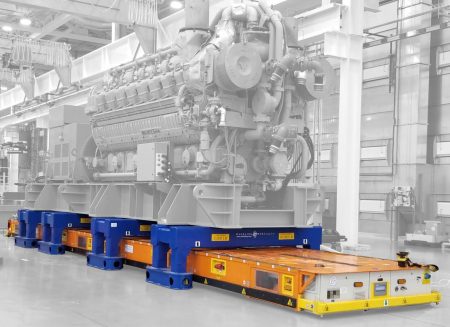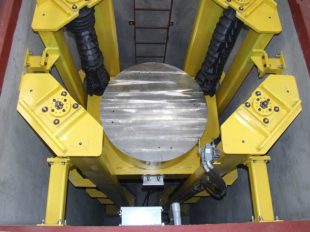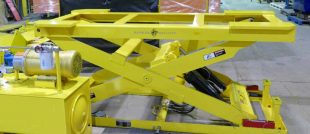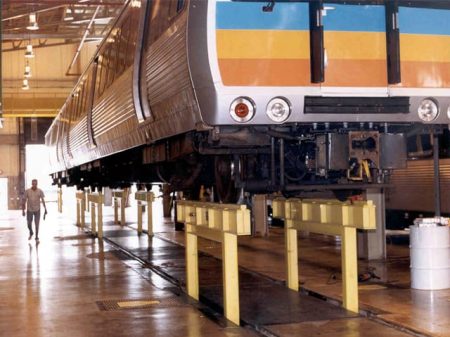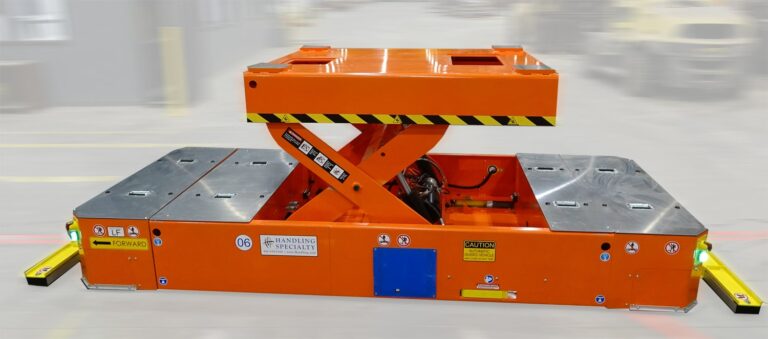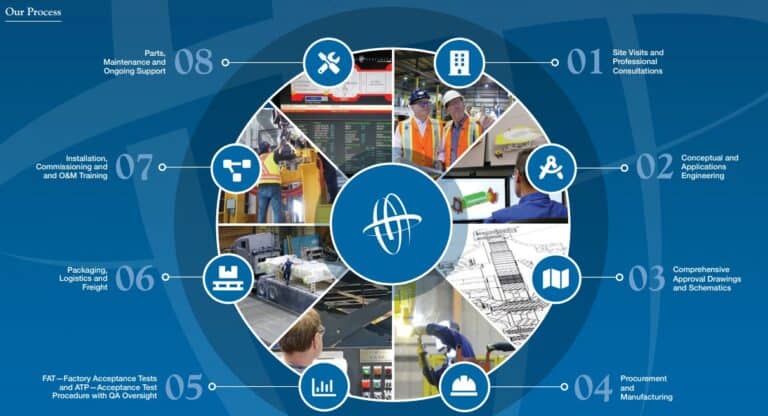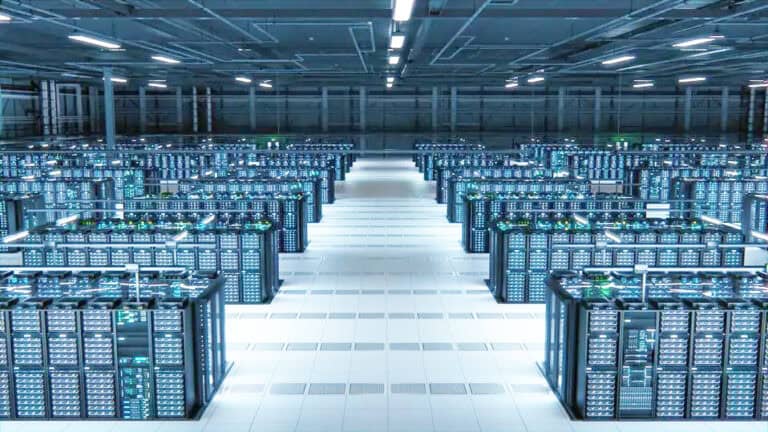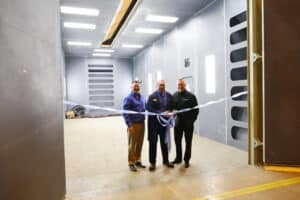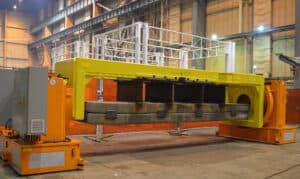Key Highlights
- Railcar maintenance equipment is essential for ensuring the longevity and proper functioning of rail vehicles.
- Different types of maintenance equipment are used in railcar maintenance, including lifting equipment, traversing equipment, turntables, rotators, and more.
- Safety and compliance with industry standards are crucial when operating railcar maintenance equipment.
- Effective maintenance planning and scheduling can significantly improve efficiency and minimize downtime.
- Case studies of successful maintenance practices can provide valuable insights and lessons for rail systems.
Introduction
Railcar maintenance is crucial for smooth rail system operations. Heavy railcar maintenance equipment, such as drop tables, ensures safety and efficiency. Companies like Handling Specialty provide international repair coverage with advanced machinery like car hoists and split rail systems. Utilizing proper railcar maintenance equipment at your rail MRO facility is essential to reduce downtime and enhance rail service availability.
Understanding Railcar Maintenance Equipment
Ensure the reliability and longevity of railcar maintenance equipment. These custom tools and machinery are designed to uphold the highest maintenance standards for multiple railcar designs, including passenger rail, freight, and commuter rail. This includes railcars of differing axle sizes. From railcar hoists to turn tables and electric jacks, each piece of MRO equipment serves a specific function in maintaining and repairing railcars. Technologies such as remote control and central consoles have enhanced the productivity and precision of maintenance tasks, reducing downtime. Maintenance equipment providers like Handling Specialty offer a range of solutions tailored to the specific needs of railcar MRO, including hoisting, traversing, and holding equipment, contributing to the seamless operation of rail systems worldwide.
The Importance of Maintenance for Railcar Longevity
Adhering to scheduled railcar maintenance routines and utilizing reliable maintenance equipment are vital practices for businesses to minimize wear and tear, prevent unexpected breakdowns, and prolong the lifespan of their rail vehicles. Effective maintenance not only enhances safety but also boosts the efficiency of railway operations, lowering the chances of accidents and enhancing the reliability of rolling stock.
Neglecting maintenance can have severe consequences, including increased downtime, costly repairs, and operational disruptions that impact both passenger and freight services. Therefore, operators must prioritize maintenance activities and invest in high-quality railcar maintenance equipment. By doing so, they can maintain the peak performance of their railcars and ensure safe and efficient operations in the long run.
Overview of Heavy Railcar Maintenance Processes
Maintaining railcars involves complex steps to maintain peak performance and safety. This includes routine inspections, lubrication, and part changes to avoid malfunctions and extend the life of the rail vehicles. Maintenance follows strict standards to ensure passenger safety and operational effectiveness. Maintenance equipment, from transfer tables to nosecone gantries, keeps railcars in excellent shape. Monitoring systems are essential for early issue detection, reducing downtime, and maximizing availability. Efficient maintenance processes are crucial for the proper functioning of heavy railcars.
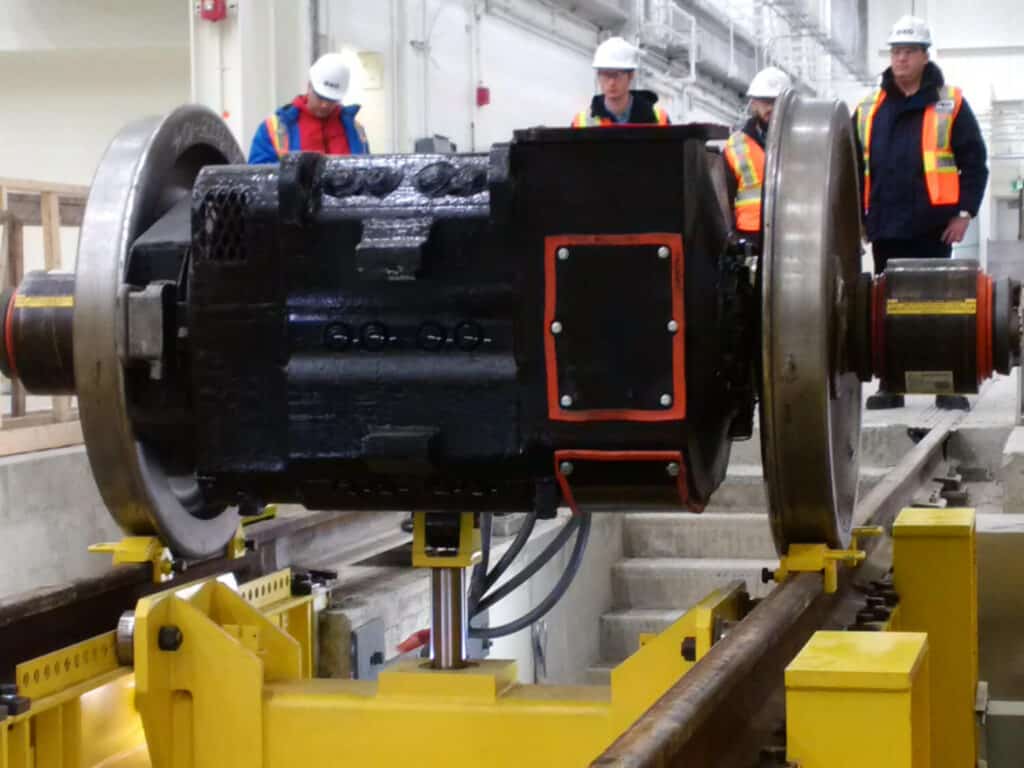
Key Types of Heavy Railcar Maintenance Equipment
- Railcar maintenance equipment plays a vital role in ensuring the smooth operation of heavy rail systems.
- Among the key types of equipment are lift and transfer systems.
- Lift systems are crucial for providing access underneath the railcars for inspection, parts change-out, and repairs.
- Hydraulic tools like hoists and jacks are essential for heavy-duty tasks like axle repairs and body support adjustments.
- These robust tools adhere to the highest standards to maintain the integrity of rail vehicles.
- Leading providers like Handling Specialty offer a range of maintenance equipment and repair services tailored to the specific needs of commuter and freight rail operations.
Lift Systems and Their Role in Railcar Maintenance
Efficient railcar maintenance equipment is essential to ensure the smooth operation of rail vehicles. Lift systems play a crucial role in enabling easy access to different components of railcars for maintenance and repair tasks. These systems, such as car hoists and underfloor lifting equipment, elevate railcars to a convenient working height, allowing technicians to perform necessary inspections and repairs efficiently. By utilizing advanced, custom MRO systems with remote control capabilities and central console monitoring, maintenance teams can enhance productivity and safety standards in railcar maintenance, minimizing downtime and optimizing railcar availability.
Hydraulic Tools and Equipment for Railcar Repair
Railcar repair often involves the use of specialized equipment. Hydraulic systems are crucial in efficiently lifting heavy railcars for maintenance and repair. These tools include hydraulic drop tables, car hoists, and body supports that ensure the safety and stability of the railcar during repair procedures. With technological advancements, many repair facilities include remote control capabilities for precision and ease of use. Hydraulic equipment contributes significantly to reducing downtime and increasing the efficiency of railcar repair processes, ultimately helping maintain the highest maintenance standards for rail systems.
Diagnostic Tools Used in Railway Car Maintenance Equipment
Diagnostic equipment for the upkeep of your railcar MRO equipment is another way Handling Specialty saves you money through efficient practices. These instruments play a crucial role in identifying potential issues before they escalate, thus reducing downtime and ensuring railcar equipment longevity. Among the essential diagnostic gear are monitoring systems, which talk to your control panels via IIoT (Industrial Internet of Things). Monitoring systems provide real-time data on various components that enable safe lifting and traversing during inspections and repairs. Central consoles serve as control hubs for diagnostics and maintenance operations, enhancing overall efficiency. By utilizing these diagnostic instruments, rail operators can uphold the highest standards in maintenance practices, ensuring the safety and reliability of their rail vehicle MRO equipment.
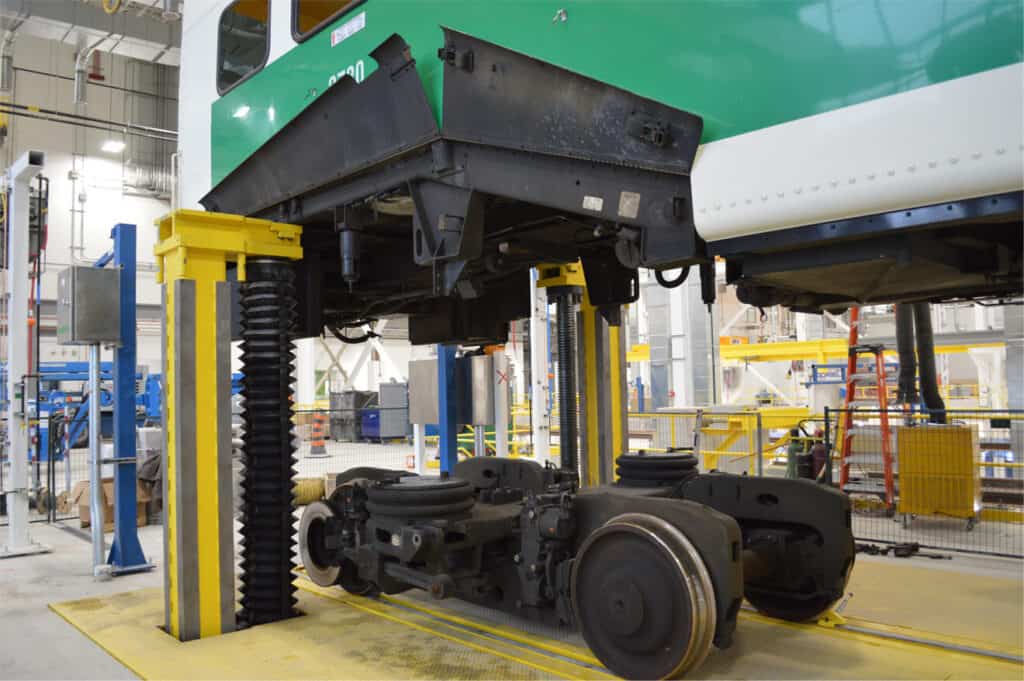
Spotlight on Innovative Maintenance Equipment
In the rail industry, innovative maintenance equipment is pivotal in enhancing operational efficiency. These customized tools and systems leverage advanced technologies to streamline maintenance processes and minimize downtime. With state-of-the-art, sophisticated lifting equipment, railcar technicians embrace the latest solutions to uphold the highest maintenance standards. Companies like Handling Specialty are at the forefront of delivering innovative maintenance equipment that caters to the diverse needs of rail systems worldwide. By integrating these modern solutions into their repair facilities, operators can optimize maintenance operations and elevate the overall performance of their rail fleets.
Advanced Robotics in Railcar Maintenance
Advanced robotics has revolutionized the landscape of railcar maintenance equipment, offering efficient and precise solutions to complex tasks. These robotic systems can handle a wide range of maintenance activities, including traversing parts via AGV systems with unparalleled accuracy. By utilizing automated guided vehicles, these robots can enhance maintenance efficiency, reduce downtime, and ensure the highest safety standards. Equipped with advanced sensors and monitoring capabilities, they can move parts like wheelsets from one end of a rail MRO facility to the desired location with remarkable precision. The integration of robotics in rail maintenance represents a significant step towards enhancing the longevity and performance of rail vehicles while optimizing operational costs.
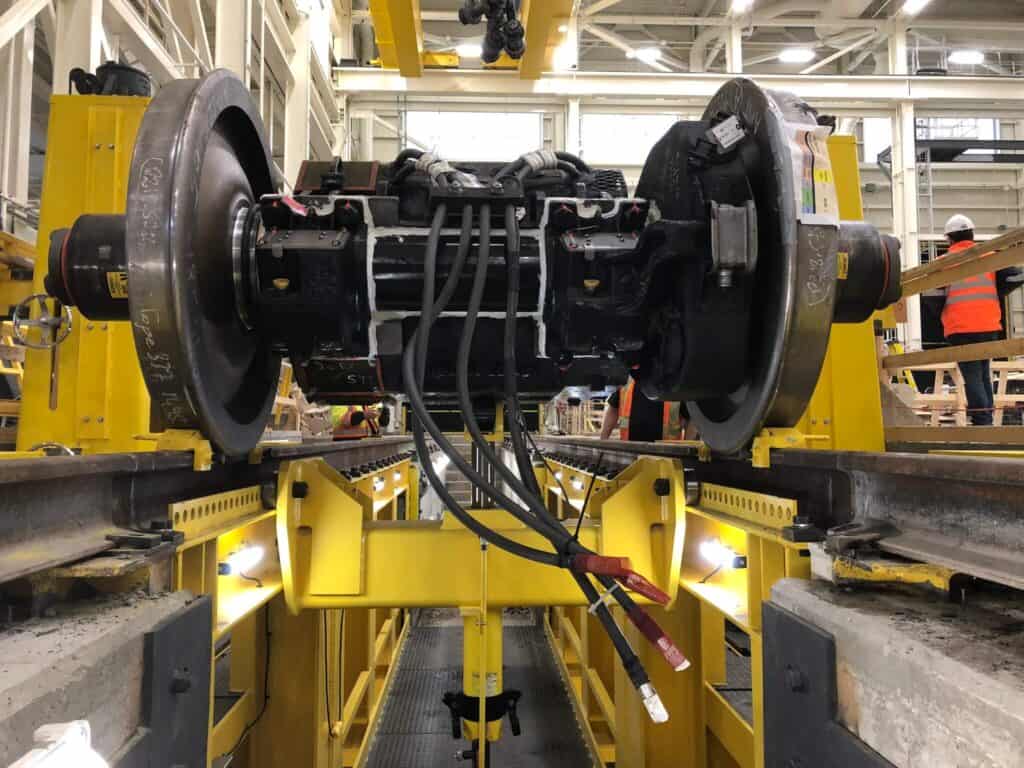
Maintenance Equipment Safety and Compliance
Adhering to rail industry standards and regulations ensures the safety of maintenance personnel and the proper functioning of railcar systems. Here are some key points to understand about maintenance equipment safety and compliance:
- Safety features, such as automatic locking mechanisms, overload protection, limit switches, and emergency stop buttons, are incorporated into maintenance equipment to minimize the risk of accidents.
- Compliance with industry standards, such as those set by regulatory bodies and professional associations, ensures that maintenance operations meet the required safety and quality benchmarks.
- Regular inspections and maintenance of railcar MRO equipment are essential to ensure their safe and reliable operation.
- Compliance with safety and compliance standards is a legal requirement and a responsibility towards the well-being of maintenance personnel and the public.
Ensuring Worker Safety During Equipment Operation
Worker safety is of utmost importance during heavy railcar maintenance equipment operation. Here are some key points to understand about ensuring worker safety during equipment operation:
- Regular inspections and maintenance of rail MRO equipment are essential to identify potential safety hazards or malfunctions.
- Equipment manufacturers design products with safety features, such as emergency stop buttons and automatic locking mechanisms, to protect workers from accidents.
- Maintaining the highest standards of safety and continuously improving safety protocols are essential for minimizing the risk of accidents and ensuring worker well-being.
Compliance with Industry Standards and Regulations
Compliance with industry standards and regulations is crucial for your rail MRO equipment design/builder to follow when operating heavy railcar maintenance equipment. Here are some key points to understand about compliance with industry standards and regulations:
- Industry standards define the minimum requirements for the design, operation, and maintenance of railcar maintenance equipment, ensuring consistent and safe practices across the industry.
- Regulatory bodies, such as government agencies and professional associations, set and enforce regulations to ensure safe and reliable operations in the rail industry.
- Compliance with industry standards and regulations is a legal requirement and a commitment to maintaining the highest quality and safety standards.
- Regular inspections and audits ensure compliance with industry standards and regulations.
- Non-compliance with industry standards and regulations can result in penalties, legal liabilities, and reputational damage.

Maintenance Scheduling and Efficiency
Effective maintenance scheduling is crucial for optimizing the efficiency of railcar maintenance equipment and minimizing downtime. Here are some key points to understand about maintenance scheduling and efficiency:
- Maintenance scheduling involves planning and allocating resources for maintenance tasks, such as personnel and time.
- By scheduling maintenance activities strategically, rail systems can minimize the impact on operations and reduce downtime.
- Efficient maintenance scheduling considers factors such as the availability of equipment, the impact on railcar MRO operations, and the optimal use of resources.
- Predictive maintenance techniques, such as condition monitoring and data analysis via IIoT, can help identify maintenance needs in advance, enabling proactive scheduling and minimizing unplanned downtime.
- Effective maintenance scheduling improves rail MRO systems’ overall efficiency, improving reliability, cost savings, and customer satisfaction.
Strategies for Effective Railcar Maintenance Planning
Maximize the efficiency of railcar maintenance equipment operations with these key strategies for effective PM planning:
- Develop a comprehensive maintenance plan with your rail MRO equipment supplier, like Handling Specialty that reviews the individual requirements of railcar maintenance, including routine inspections, preventive maintenance, and repairs.
- Prioritize maintenance tasks based on their criticality and impact on rail car availability.
- Implement condition-based or predictive maintenance techniques to identify maintenance needs in advance and schedule them proactively.
- Optimize resource allocation, including equipment, personnel, and time, to minimize downtime and maximize efficiency.
- Establish clear communication channels and coordination between maintenance teams, suppliers, operations, and other stakeholders to ensure the smooth execution of maintenance plans.
- Regularly review and evaluate the effectiveness of maintenance plans, making necessary adjustments and improvements based on data and feedback.
The Impact of Maintenance on Railcar Equipment Availability
Some key points in understanding the impact of maintenance on railcar equipment availability can be seen below:
- Effective maintenance practices minimize unexpected breakdowns, which reduces the time required for repairs.
- Regular preventive maintenance and inspections should identify potential issues before they become significant failures or are allowed to disrupt railcar service equipment.
- Timely repairs and component replacements should be scheduled and carried out during planned maintenance windows.
- Railcar equipment maintenance and scheduling can effectively reduce downtime, allowing more railcars to be in service at any time.
- Railcar MRO equipment’s availability directly impacts railcar systems’ reliability and efficiency.

Case Studies: Successful Maintenance Practices
Examining case studies of successful maintenance practices can provide valuable insights and lessons for railcar MRO systems. Handling Specialty’s case studies showcase real-life examples of effective maintenance strategies and their impact on railcar reliability and availability. By studying these success stories, rail systems can learn from industry best practices, talk to our technical salespeople directly to identify areas for improvement, and implement strategies that have been proven successful in their own MRO facilities.
Innovations in Railcar Maintenance from Leading Railway MRO Equipment Providers
Leading Rail MRO design/build companies like Handling Specialty have been at the forefront of innovation in railcar maintenance. We have pioneered new approaches and technologies to improve the efficiency and effectiveness of maintenance operations. Here are some key innovations in railcar maintenance adopted by leading railways:
- Implementing advanced robotics for maintenance tasks, such as AGV traversing technologies.
- Adoption of predictive maintenance techniques (IoT), such as condition monitoring and data analysis, to identify maintenance needs in advance and avoid unplanned downtime.
- Utilization of remote monitoring and control systems to improve the efficiency of maintenance processes and reduce the need for manual intervention.
- Collaboration with technology partners and research institutions to develop and implement cutting-edge maintenance technologies for predictive maintenance and asset management.
Lessons Learned from Maintenance Challenges
Maintenance challenges in the rail industry have provided valuable lessons and insights for improving maintenance practices. Here are some key lessons learned from maintenance challenges:
- Regular inspections and preventive maintenance are important to address potential issues before they escalate into major failures.
- The significance of prompt and efficient repairs is to minimize downtime and ensure the availability of railcar MRO equipment for service.
- Effective coordination and communication between maintenance teams, operations, and Handling Specialty are needed to streamline maintenance operations and minimize disruptions.
- The role of continuous training and upskilling of maintenance personnel to ensure their competence in handling complex maintenance tasks and operating advanced maintenance equipment.
- The value of data-driven decision-making and the adoption of digital technologies for efficient maintenance planning and asset management.
Conclusion
Understanding and implementing effective heavy railcar maintenance equipment is crucial for ensuring the safety and longevity of the railcar. Advanced tools like lift systems, hydraulic equipment, and diagnostics enhance maintenance efficiency and worker safety, and innovations such as AGVs improve maintenance processes. Complying with industry standards, strategic planning, learning from case studies, and addressing common challenges maximize rail car availability.
Frequently Asked Questions
What Are the Most Common Maintenance Issues for Railcars?
The most common maintenance issues for heavy rail cars include mechanical failures, electrical malfunctions, and wear and tear of components. These issues can result in service disruptions, reduced reliability, and increased maintenance costs for railcars, whether light rail, freight, or passenger transport.
How Often Should Railcar Maintenance Equipment Be Serviced?
The frequency of servicing railcar maintenance equipment depends on various factors, including the specific equipment, its usage, and the manufacturer’s recommendations. Regular maintenance and inspections are essential to ensure the proper functioning and longevity of the MRO equipment. Following a preventive maintenance schedule and consulting the equipment manufacturer or authorized repair services for specific servicing requirements is recommended.

